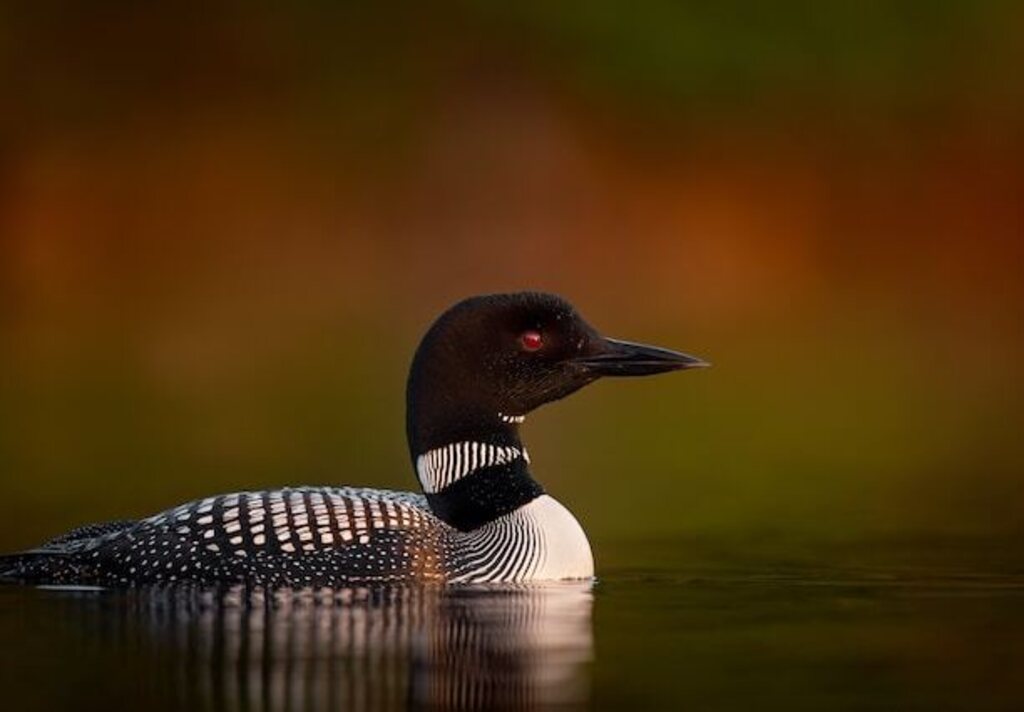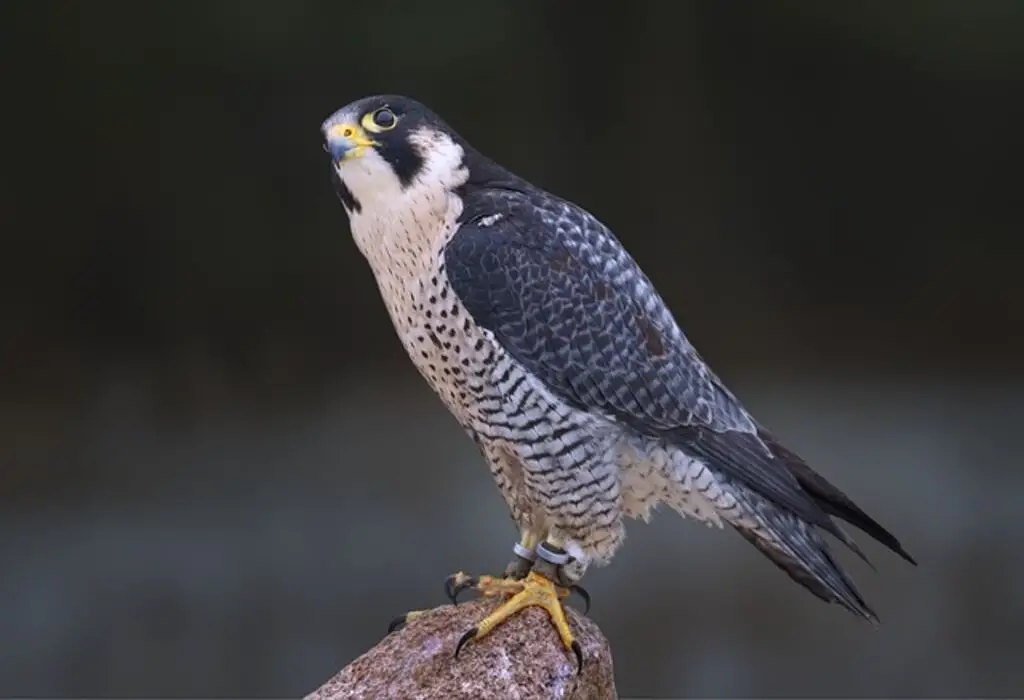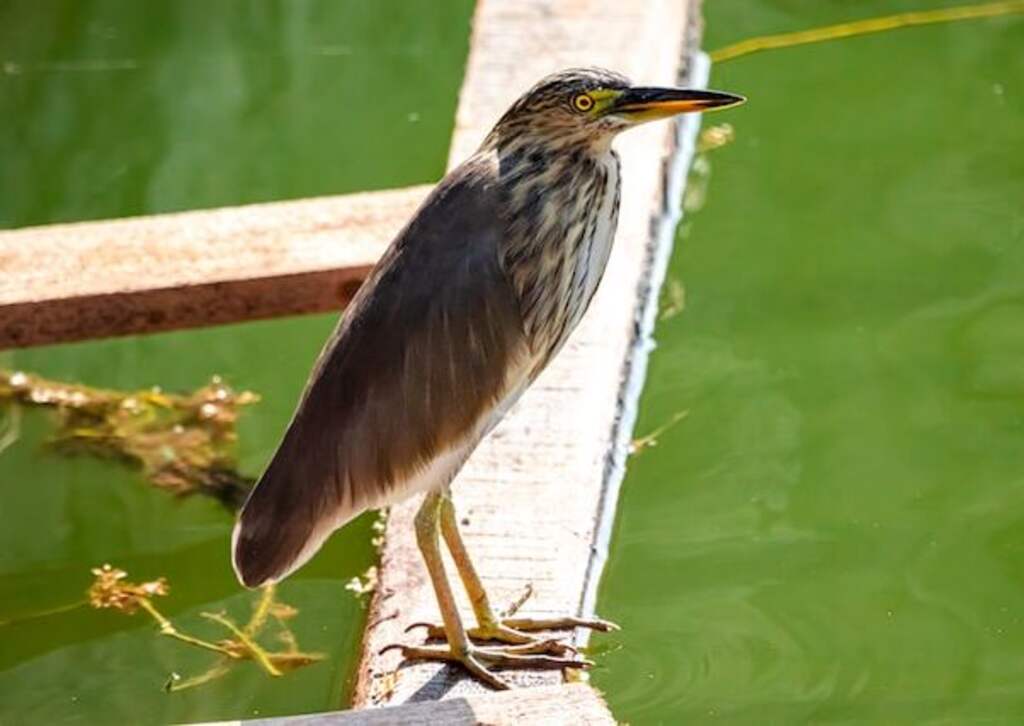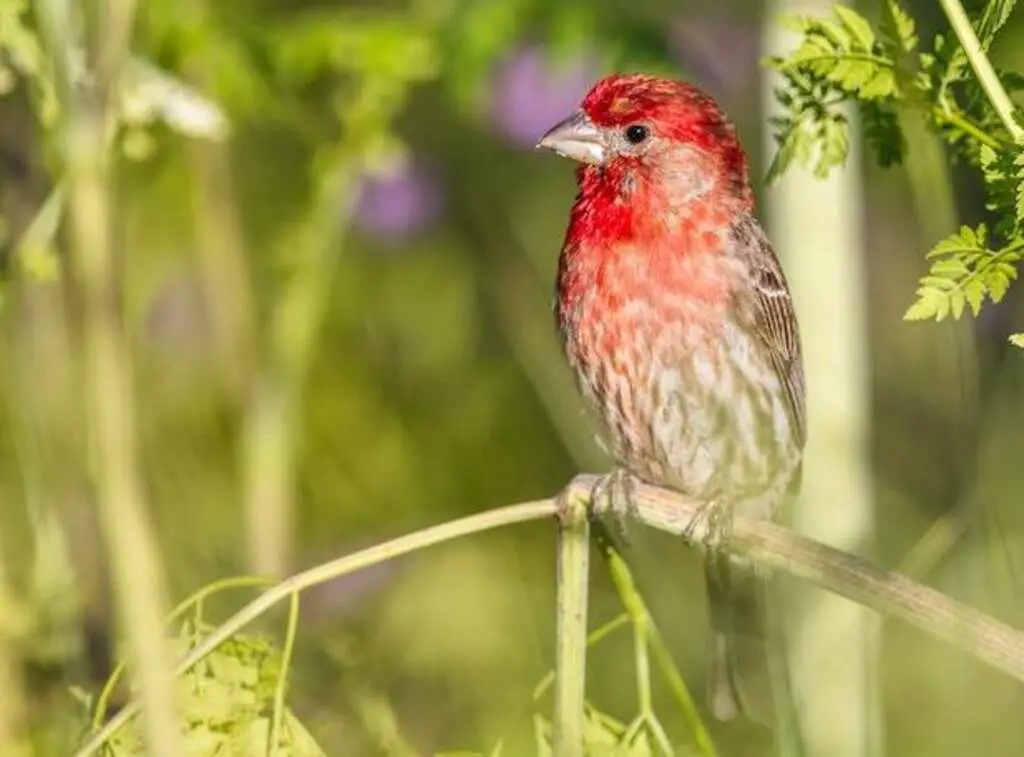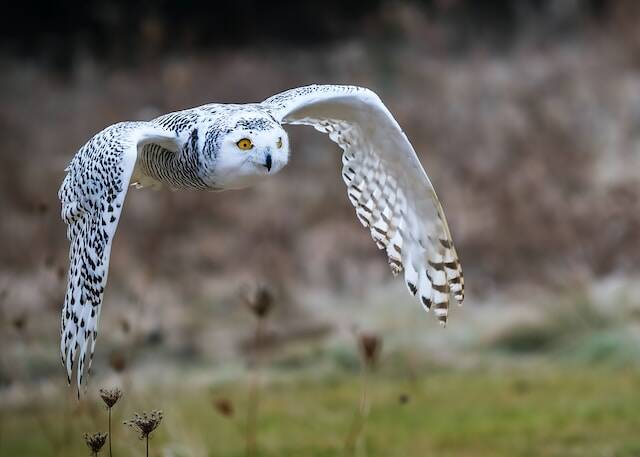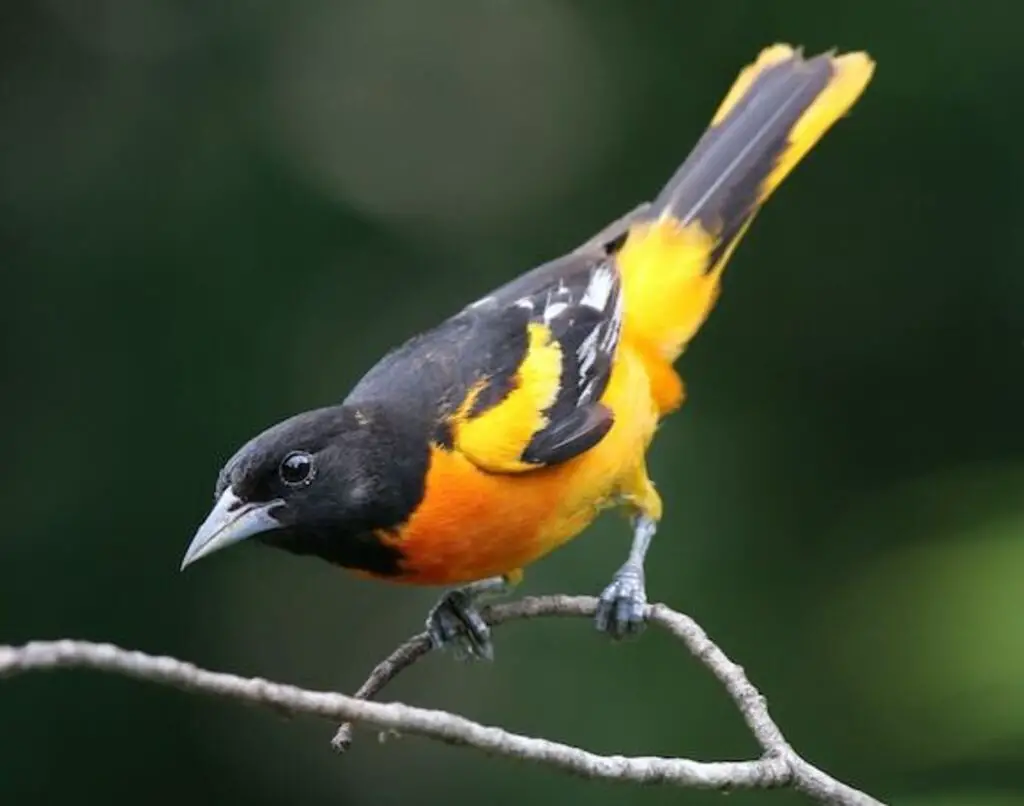If you’re a birdwatching enthusiast looking for a new adventure, Vermont should be on your list. With its diverse landscapes and abundant wildlife, the state offers some of the best birdwatching opportunities in New England.
From the lush forests of the Green Mountains to the scenic shores of Lake Champlain, Vermont’s birding destinations are sure to impress.
Table of Contents
- 1 Key Takeaways:
- 2 Top Birdwatching Hotspots In Vermont
- 3 Vermont Bird Species: A Haven for Avian Diversity
- 4 Exploring Vermont’s Birdwatching Trails
- 5 Top Birdwatching Hotspots in Northern Vermont
- 6 Birdwatching Gems in Central Vermont
- 7 Southern Vermont’s Must-Visit Birding Destinations
- 8 Vermont Birdwatching Tours: Expert-Guided Adventures
- 9 Understanding Birdwatching Ethics in Vermont
- 10 Birdwatching Gear and Essentials for Vermont Birding
- 11 Tips for Successful Birdwatching in Vermont
- 12 Conclusion
- 13 FAQs: Top Birdwatching Hotspots In Vermont
- 13.1 What are the top birdwatching hotspots in Vermont?
- 13.2 How diverse are the bird species in Vermont?
- 13.3 Are there birdwatching trails in Vermont?
- 13.4 What are the top birdwatching hotspots in Northern Vermont?
- 13.5 Which are the birdwatching gems in Central Vermont?
- 13.6 What are the must-visit birding destinations in Southern Vermont?
- 13.7 Are there birdwatching tours available in Vermont?
- 13.8 How can I practice responsible birdwatching in Vermont?
- 13.9 What gear and essentials do I need for birdwatching in Vermont?
- 13.10 What tips can you provide for successful birdwatching in Vermont?
- 14 Author
Key Takeaways:
- Vermont offers exceptional birdwatching opportunities
- The state boasts diverse landscapes and abundant wildlife
- Vermont’s top birdwatching hotspots are worth exploring
Top Birdwatching Hotspots In Vermont
Vermont offers a variety of habitats and bird species for birdwatchers to discover. Green Mountain Audubon Center is a great place to spot woodland birds, while Dead Creek Wildlife Management Area is a prime location for waterfowl.
Missisquoi National Wildlife Refuge is a great spot for waterfowl and shorebirds, while Mount Mansfield State Forest is a great place to see mountain birds. Lake Champlain is a must-visit for its variety of waterbirds.
Whether you’re an experienced birdwatcher or just starting out, Vermont’s birdwatching hotspots are sure to provide an unforgettable experience.
Vermont Bird Species: A Haven for Avian Diversity
Vermont’s diverse landscape offers countless habitats that have attracted a broad range of bird species over the years. From woodlands and wetlands to marshes and mountains, the state boasts a myriad of habitats that provide shelter and food for a variety of birds throughout the year.
The state’s location on the Atlantic Flyway, a major bird migration route along the Atlantic Coast, also adds to the richness of bird species found in Vermont. This fact alone makes birdwatching in Vermont a unique and rewarding experience.
Vermont’s Bird Species: A Sampling
Birdwatchers in Vermont can expect to encounter an extensive range of bird species throughout the state, including both resident and migratory birds. Some of the most common and popular species include:
| Species | Location/ Habitat |
|---|---|
| Bald Eagle | Large bodies of water, especially rivers and lakes in Northern and Central Vermont. |
| Common Loon | Lakes and ponds throughout the state. |
| Piping Plover | Beaches along Lake Champlain, mostly in Northern Vermont. |
| Eastern Bluebird | Fields and meadows across the state. |
| Ruby-throated Hummingbird | Woodlands, gardens, and backyards in Central and Southern Vermont. |
These species are just a few examples of the many birds that can be spotted in Vermont. While some birds can be found statewide, others are limited to specific habitats or regions, which makes exploring different parts of the state all the more rewarding.
Exploring Vermont’s Birdwatching Trails
Vermont offers some of the best birdwatching trails in New England, with a variety of habitats to explore and a wide range of bird species to observe. Here are some of the top birdwatching trails in Vermont:
| Trail Name | Location | Key Bird Species |
|---|---|---|
| Mud Pond Trail | Marsh-Billings-Rockefeller National Historical Park | Woodpeckers, warblers, thrushes, vireos |
| Huntington River Trail | Huntington | Wrens, woodpeckers, vireos, hawks, owls |
| Birds of Vermont Museum Trail | Huntington | Rare and resident bird species |
The Mud Pond Trail in Marsh-Billings-Rockefeller National Historical Park is a popular spot for birdwatching, with its diverse forest habitat and varied bird species. Keep an eye out for woodpeckers, warblers, thrushes, and vireos. The trail is easy to navigate, with interpretive signs and benches for resting.
The Huntington River Trail in Huntington is another great option, with wrens, woodpeckers, and vireos among the bird species commonly spotted. Hawks and owls can also be seen in the area. The trail is moderate in difficulty and offers scenic views of the Huntington River and surrounding mountains.
If you’re looking for a unique birdwatching experience, check out the Birds of Vermont Museum Trail in Huntington. The trail winds through a bird sanctuary and features exhibits of rare and resident bird species. Visitors can also participate in bird banding and educational programs.
Remember to bring your binoculars, field guide, and other birdwatching essentials, and be respectful of the natural environment. Happy birding!
Top Birdwatching Hotspots in Northern Vermont
Vermont’s northern region boasts some of the state’s best birdwatching opportunities, with several hotspots that attract both resident and migratory birds. From lakes and wetlands to forests and fields, these locations provide birdwatchers with diverse habitats and a chance to spot an array of bird species.
| Hotspot | Location | Notable Species |
|---|---|---|
| Missisquoi National Wildlife Refuge | Swanton | Bald eagle, osprey, sandhill crane, warblers, waterfowl |
| Green River Reservoir | Hyde Park | Loons, ducks, osprey, bald eagle, warblers |
| Mount Mansfield | Underhill | Bicknell’s thrush, blackpoll warbler, spruce grouse, northern saw-whet owl |
| Dead Creek Wildlife Management Area | Addison | Snow goose, waterfowl, bald eagle, sandhill crane, shorebirds |
Missisquoi National Wildlife Refuge, located in Swanton, offers a varied landscape of wetlands, forests, and open fields. This diverse habitat attracts a wide range of bird species, including bald eagles, ospreys, sandhill cranes, and various warblers. Canoe and kayak tours are available for visitors to explore the refuge’s waterways and observe waterfowl and other birds up close.
Green River Reservoir in Hyde Park is a 2,000-acre undeveloped lake surrounded by forests. It is home to loons, ducks, ospreys, bald eagles, and various warblers. Canoeing or kayaking on the lake provides a unique perspective for birdwatching.
Mount Mansfield, located in Underhill, is the highest peak in Vermont and is home to various bird species, including the Bicknell’s thrush, blackpoll warbler, spruce grouse, and northern saw-whet owl. The Mansfield Conservation Area, located on the east slope of the mountain, offers hiking trails with scenic views and opportunities to observe these bird species in their natural habitat.
Dead Creek Wildlife Management Area in Addison is a wetland complex that provides a critical stopover for migratory birds. It is home to snow geese, waterfowl, bald eagles, sandhill cranes, and various shorebirds. The area has several observation areas and a visitor center with educational exhibits.
Exploring these northern Vermont hotspots provides birdwatching enthusiasts with a chance to observe a variety of bird species in diverse habitats. Whether it’s hiking, canoeing, or visiting observation areas, these locations offer a unique experience for birdwatchers to discover the avian diversity of Vermont.
Birdwatching Gems in Central Vermont
If you’re looking for birding destinations that are off the beaten path, Central Vermont is the place to be. With its rolling hills, pristine forests, and sparkling lakes, this region offers breathtaking scenery and a wealth of birdwatching opportunities. Here are some of the top birding hotspots in Central Vermont.
1. Quechee State Park
Situated on the banks of the Ottauquechee River, Quechee State Park boasts over 500 acres of rolling forests, open fields, and hiking trails. The park is home to a diverse range of bird species, including woodpeckers, thrushes, warblers, and raptors. The Quechee Gorge, a spectacular 165-foot-deep chasm, provides a stunning backdrop for birdwatching.
| Location: | 5800 Woodstock Rd, Quechee, VT 05059 |
|---|---|
| Best time to visit: | May to August |
| Key species: | Black-throated Blue Warbler, Bald Eagle, Pileated Woodpecker |
2. Marsh-Billings-Rockefeller National Historical Park
The Marsh-Billings-Rockefeller National Historical Park is a unique birding destination that combines history, conservation, and nature. The park features over 20 miles of hiking trails that wind through a mix of forest, fields, and wetlands. Visitors can spot a variety of bird species, including woodpeckers, flycatchers, vireos, and songbirds. The park also offers guided birdwatching tours and educational programs.
| Location: | 54 Elm St, Woodstock, VT 05091 |
|---|---|
| Best time to visit: | May to October |
| Key species: | Olive-sided Flycatcher, Blackburnian Warbler, Eastern Bluebird |
3. Gifford Woods State Park
Gifford Woods State Park is a birding destination that offers a mix of upland and wetland habitats. The park is known for its towering trees, picturesque streams, and peaceful hiking trails. Birdwatchers can expect to see a variety of species, including woodpeckers, thrushes, sparrows, and waterfowl. The park also offers campsites and cabins for overnight stays.
| Location: | 34 Gifford Woods Rd, Killington, VT 05751 |
|---|---|
| Best time to visit: | April to September |
| Key species: | Yellow-bellied Sapsucker, American Woodcock, Hermit Thrush |
Central Vermont’s birdwatching hotspots offer a unique blend of natural beauty and avian diversity. Whether you’re a seasoned birder or a novice, these destinations are sure to delight and inspire you. Don’t miss the opportunity to explore the hidden gems of Central Vermont!
Southern Vermont’s Must-Visit Birding Destinations
If you’re looking for outstanding birdwatching opportunities, Southern Vermont is the place to visit. With its diverse landscapes and habitats, this region boasts a rich variety of bird species, many of which are unique to the area. Here are some of the must-visit birding destinations in Southern Vermont:
1. Mount Equinox
Mount Equinox is the highest peak in the Taconic Range, rising to over 3,800 feet. It offers stunning vistas of the surrounding valleys and is a prime spot for observing migratory raptors, such as the Bald Eagle and the Peregrine Falcon. The summit can be reached via a scenic toll road that is open from May to October.
2. Herrick’s Cove
Herrick’s Cove, near the town of Rockingham, is a wetland reserve that attracts a wide variety of waterfowl, including Great Blue Herons, Wood Ducks, and American Black Ducks. The reserve is also home to several species of warblers and sparrows, making it a popular spot for birdwatchers.
3. Bonnyvale Environmental Education Center
The Bonnyvale Environmental Education Center in Brattleboro is a 117-acre nature preserve that is teeming with birdlife. The center’s varied habitats, including fields, forests, and wetlands, provide a home for over 100 species of birds, including the Eastern Bluebird, the Scarlet Tanager, and the Great Horned Owl.
4. Hamilton Falls
Hamilton Falls, located in Jamaica State Park, is a scenic waterfall surrounded by a lush forest. The park’s diverse habitats support a wide variety of bird species, including the Northern Harrier, the Pileated Woodpecker, and the Louisiana Waterthrush. Hiking trails in the park offer great opportunities for birdwatching.
These are just a few of the many birdwatching hotspots in Southern Vermont. Whether you’re a seasoned birder or a beginner, exploring this region’s diverse habitats is sure to provide an unforgettable birding experience.
Vermont Birdwatching Tours: Expert-Guided Adventures
Birdwatching tours in Vermont offer a unique experience for avid birders and first-timers alike. These tours are led by experienced and knowledgeable guides who know the best birding spots in the state and can help visitors identify and observe rare bird species.
Expert-guided tours provide a comfortable and stress-free way to explore different birding trails and locations in Vermont. The guides are equipped with the latest birding scopes and equipment, allowing visitors to get up close and personal with bird species they may not have otherwise been able to observe.
Visitors can choose from a range of tours, including half-day and full-day options, as well as multi-day tours that cover different regions of Vermont. Some tours even offer specialized themes, such as warbler or owl watching.
Birdwatching tours in Vermont are not only a great way to discover new birding locations, but also to learn about the local ecosystems and conservation efforts for bird species in the state. These tours also offer visitors the chance to meet other birding enthusiasts and share their passion for birdwatching.
If you’re interested in joining a birdwatching tour in Vermont, be sure to book in advance and check the tour operator’s credentials and reputation. The best recommended birdwatching tour operator in Vermont is Green Mountain Audubon Center.
Understanding Birdwatching Ethics in Vermont
Birdwatching is a wonderful way to appreciate nature and observe the rich birdlife of Vermont. However, it’s essential for birdwatchers to respect bird habitats and practice ethical birding to ensure the preservation of bird species and their habitats. Here are some guidelines to keep in mind while birding in Vermont:
Stay on Designated Trails
When birdwatching on trails, always stay on the designated paths to avoid damaging bird habitats. Avoid trampling vegetation or entering restricted areas that are not open to the public. Never disturb bird nests or nesting areas.
Minimize Your Presence
Try to minimize your impact on bird habitats by keeping a respectful distance from birds and avoiding loud noises or sudden movements that could startle them. Always follow the instructions of park rangers or expert guides regarding birdwatching practices.
Do Not Feed Birds
Feeding birds can be harmful to their health and disrupt their natural feeding patterns. Avoid feeding birds or leaving food scraps behind, as this can attract unwanted predators and disrupt the balance of the ecosystem.
Dispose of Trash Properly
Properly dispose of any trash or waste items while birdwatching. Always carry a trash bag with you and dispose of your waste in designated receptacles or carry it out with you.
Respect Other Birdwatchers
Be courteous to other birdwatchers and don’t disturb their experience. Avoid blocking their view or making loud noises that could disrupt their observation.
By following these guidelines, birdwatchers can enjoy their hobby while contributing to the preservation of Vermont’s bird species and habitats.
Birdwatching Gear and Essentials for Vermont Birding
Birdwatching in Vermont is a unique experience, and having the right gear can enhance your birding adventure. Here are some essential items you should consider bringing with you:
| Item | Description |
|---|---|
| Binoculars | A good pair of binoculars is crucial for spotting and observing birds. Look for binoculars with at least 8x magnification, a wide field of view, and comfortable to hold for extended periods. |
| Field Guide | A field guide can help you identify bird species and learn more about their behavior, habitat, and migration patterns. Consider getting a guidebook specific to Vermont or New England. |
| Clothing | Dress appropriately for the weather and terrain. Wear comfortable, lightweight clothing that allows for free movement. In colder months, layering is key, and consider bringing waterproof gear. |
| Hiking Boots | A sturdy pair of hiking boots with good traction is essential for exploring birdwatching trails and rugged terrains. |
| Notebook and Pen | Keeping track of the birds you’ve seen and their behavior can be helpful for future birdwatching trips. Bring a notebook and pen to jot down notes and observations. |
| Camera | Capturing photos of birds can be a great way to document your birdwatching experience and help with species identification later on. Consider bringing a camera with a telephoto lens or a digiscope adapter for your binoculars. |
Remember to pack light and only bring the essentials. Consider the season and location when choosing your gear, and always follow ethical birdwatching practices to minimize your impact on bird habitats.
Tips for Successful Birdwatching in Vermont
If you’re planning a birdwatching adventure in Vermont, here are some tips to help you make the most of your experience:
1. Time your visit
Spring and fall are the best seasons for birdwatching in Vermont, as many migratory bird species pass through the state during these times. June and July are also good months to spot breeding birds. However, different species may have specific seasonal patterns, so do your research and plan accordingly.
2. Consider weather conditions
Weather can greatly affect bird activity and sightings. Overcast or cloudy days may be better for birdwatching as birds are more active during these conditions. Mornings are also generally better for birdwatching than afternoons when birds may be less active due to higher temperatures.
3. Learn bird observation techniques
Observation skills are essential for successful birdwatching. Learn how to identify bird species by their physical traits, calls, and behaviors. Use binoculars or a spotting scope to get a closer look, and practice field sketching to record details such as coloration, size, and shape.
4. Know where to look
Research and choose specific birdwatching locations based on the species you hope to see. Trails, wetlands, forests, and open fields are all popular bird habitats in Vermont. Look for areas with diverse vegetation and water sources, which attract a variety of bird species.
5. Be quiet and patient
Birds are sensitive to noise and movement, so move slowly and quietly to avoid scaring them away. Wear clothing that blends in with the surroundings and avoid bright colors. Be patient and take time to observe, as birds may take some time to appear or move around.
6. Bring the essentials
Make sure to bring binoculars, a field guide or app, and appropriate clothing and shoes for the weather and terrain. Consider bringing a camera or notebook to record your observations and experiences. Remember to pack snacks and water as well.
7. Respect bird habitats
Stay on designated trails and avoid disturbing bird nests or habitats. Do not play bird calls or use bird decoys, as these may disrupt bird behavior and endanger their survival. Always follow the principles of responsible birdwatching and conservation.
By following these tips, you can enhance your birdwatching experience in Vermont and contribute to the conservation of its diverse bird species.
Conclusion
Vermont is a haven for birdwatching enthusiasts, offering a diverse range of bird species in beautiful natural settings. In this article, we have explored the top birdwatching hotspots in the state across its Northern, Central, and Southern regions. Birdwatching trails, tours, gear, and essentials have also been covered, along with tips and guidelines to make your birdwatching experience in Vermont a success.
It is important to remember the significance of responsible birdwatching practices and ethics to ensure the conservation of bird habitats and species. By following these guidelines and recommendations, we can all contribute to maintaining Vermont’s unique birding heritage.
So, pack your binoculars, field guides, and essential gear, and get ready to discover the beauty of Vermont’s birdlife. Whether you are a seasoned birder or a newcomer to the activity, Vermont has something special to offer everyone. Visit these top birdwatching hotspots, explore the trails, and embark on a guided tour to experience a world of diverse bird species in their natural habitats. Happy birding!
FAQs: Top Birdwatching Hotspots In Vermont
What are the top birdwatching hotspots in Vermont?
The top birdwatching hotspots in Vermont include Northern Vermont, Central Vermont, and Southern Vermont.
How diverse are the bird species in Vermont?
Vermont is a haven for avian diversity, with a wide range of bird species that can be observed.
Are there birdwatching trails in Vermont?
Yes, Vermont offers various birdwatching trails for enthusiasts to explore and enjoy.
What are the top birdwatching hotspots in Northern Vermont?
Northern Vermont boasts top birdwatching hotspots such as Lake Champlain and the Missisquoi National Wildlife Refuge.
Which are the birdwatching gems in Central Vermont?
Central Vermont is home to birdwatching gems like the Green Mountain National Forest and the Montpelier area.
What are the must-visit birding destinations in Southern Vermont?
Southern Vermont offers must-visit birding destinations such as Putney Mountain and the Dorset Quarry.
Are there birdwatching tours available in Vermont?
Yes, there are expert-guided birdwatching tours in Vermont, providing immersive experiences for enthusiasts.
How can I practice responsible birdwatching in Vermont?
Understanding and following birdwatching ethics is crucial in Vermont to protect bird habitats and contribute to conservation efforts.
What gear and essentials do I need for birdwatching in Vermont?
Essential gear for birdwatching in Vermont includes binoculars, field guides, and appropriate clothing for different seasons and terrains.
What tips can you provide for successful birdwatching in Vermont?
Timing, weather considerations, observing techniques, and attracting birds to specific areas are important factors for successful birdwatching in Vermont.

